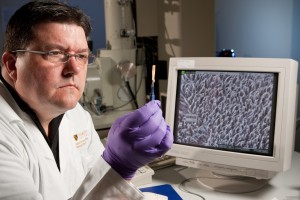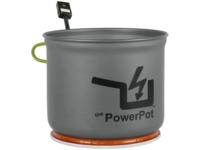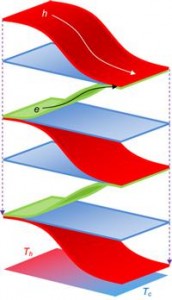 Researchers have managed to make a flexible, inexpensive energy-producing fabric that can be used in clothing or covering any surface (like inside the walls of your house, as an outer layer to use heat escaping your house). Traditional thermoelectric devices have been too rigid (and expensive) for this, so this is a pretty big deal. It’s not that efficient, but it doesn’t need to be when it’s cheap and can cover large areas. Power production is around one milliwatt per square centimeter, so you might get a watt or two from clothing made with this – but that would go a long ways towards charging your iPhone, for example. As a bonus feature, it’s piezoactive, meaning that energy is created when the material is flexed. The first products made from this material might hit the market as soon as next year.
Researchers have managed to make a flexible, inexpensive energy-producing fabric that can be used in clothing or covering any surface (like inside the walls of your house, as an outer layer to use heat escaping your house). Traditional thermoelectric devices have been too rigid (and expensive) for this, so this is a pretty big deal. It’s not that efficient, but it doesn’t need to be when it’s cheap and can cover large areas. Power production is around one milliwatt per square centimeter, so you might get a watt or two from clothing made with this – but that would go a long ways towards charging your iPhone, for example. As a bonus feature, it’s piezoactive, meaning that energy is created when the material is flexed. The first products made from this material might hit the market as soon as next year.
(read more at Business Insider)




